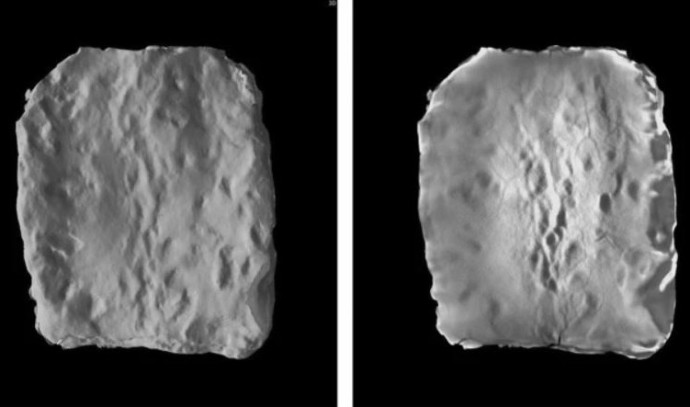You are using an out of date browser. It may not display this or other websites correctly.
You should upgrade or use an alternative browser.
You should upgrade or use an alternative browser.
Biblical evidence through Archaeology
- Thread starter Derf
- Start date
Derf
Well-known member
Here's a recent starter:

 m.jpost.com
m.jpost.com

Ancient tablet found on Mount Ebal predates known Hebrew inscriptions
‘You are cursed by the God’: Israeli-European team of scientists performed X-ray tomographic measurements with different scanning parameters to reveal the hidden text.
There is a good youtube channel for it. He has been on with known gospel denier Simcha Jacobovici
I find this very compelling.
I find this very compelling.
Derf
Well-known member

On View: Seals of Isaiah and King Hezekiah Discovered
On view through August 19, 2018, the exhibit Seals of Isaiah and King Hezekiah Discovered presents two seal impressions found 3 feet apart in the
Derf
Well-known member
They can't admit that a bible story might have been from an eye-witness, but at least they see correlation with Sodom.
/https%3A%2F%2Ftf-cmsv2-smithsonianmag-media.s3.amazonaws.com%2Ffiler_public%2F70%2F7b%2F707be10f-7424-4e07-b6fc-d5577b7de761%2Fpalace.png)
 www.smithsonianmag.com
www.smithsonianmag.com
/https%3A%2F%2Ftf-cmsv2-smithsonianmag-media.s3.amazonaws.com%2Ffiler_public%2F70%2F7b%2F707be10f-7424-4e07-b6fc-d5577b7de761%2Fpalace.png)
Ancient City's Destruction by Exploding Space Rock May Have Inspired Biblical Story of Sodom
Around 1650 B.C.E., the Bronze Age city of Tall el-Hammam was wiped out by a blast 1,000 times more powerful than the atomic bomb used at Hiroshima
Last edited:
Derf
Well-known member
A group of epigraphers claimed to have deciphered the Linear Elamite script, a system of writing used in the ancient kingdom of Elam (located in modern-day southern Iran) from 2300 to 1880 BC. François Desset, Kambiz Tabibzadeh, Matthieu Kervran, Gian Pietro Basello, and Gianni Marchesi recently published their research in the journal Zeitschrift für Assyriologie und Vorderasiatische Archäologie. Linear Elamite was first discovered in 1903 on monuments excavated at Susa. The real key to deciphering Linear Elamite was the publication in 2018 of eight silver beakers from Tal-e Malyan that bore the script. These beakers featured Elamite royal inscriptions from various kings who reigned from 2000 to 1880 BC. The authors of the study recognized that these inscriptions shared titles, formulas, and similar phraseology with later Elamite text written in cuneiform. The comparison of a single language written in two different scripts allowed these scholars to decipher Linear Elamite; they caution, however, that there is much work to do since knowledge of Elamite grammar and vocabulary is still in its infancy. This development is of interest to the field of biblical studies: the kingdom of Elam is named as one of the nations that developed its own language after the Tower of Babel (Gn 10:22, 10:31, 11:1–9), and Kedorlaomer (the Hebrew version of the Elamite name Kudur-Lagamar) is named as one of the kings involved in the Battle of Siddim (Gn 14:1–16). According to a literal, straightforward understanding of biblical chronology, both of these events would have occurred within the period in which Linear Elamite was in use

 armstronginstitute.org
armstronginstitute.org

Linear Elamite: One of the World’s Earliest Languages Finally Deciphered
Or, all but. According to a new study, it’s about as good as done—representing a huge boon for archaeologists and historians (with an interesting link to the Bible).
